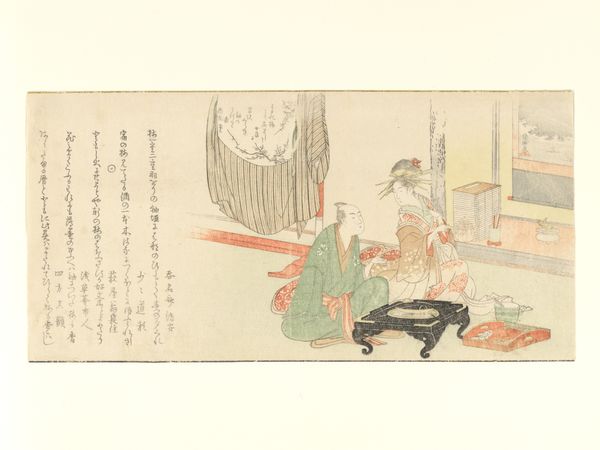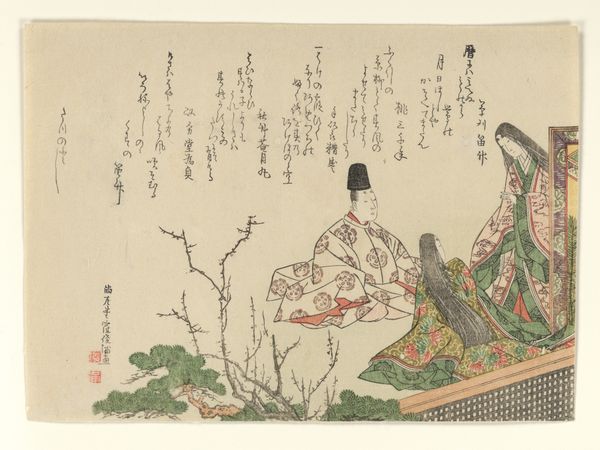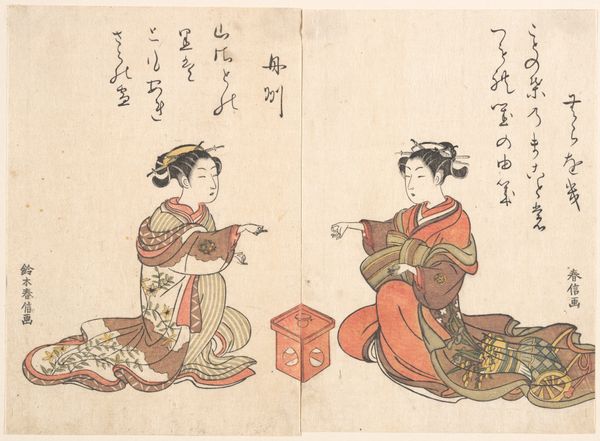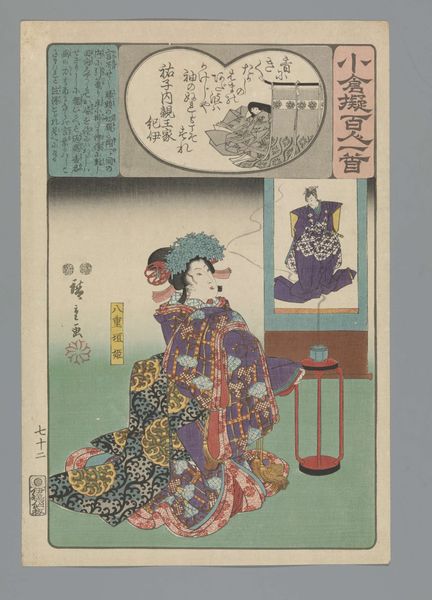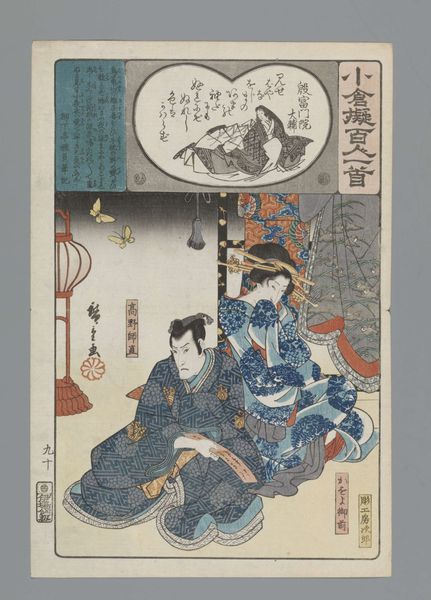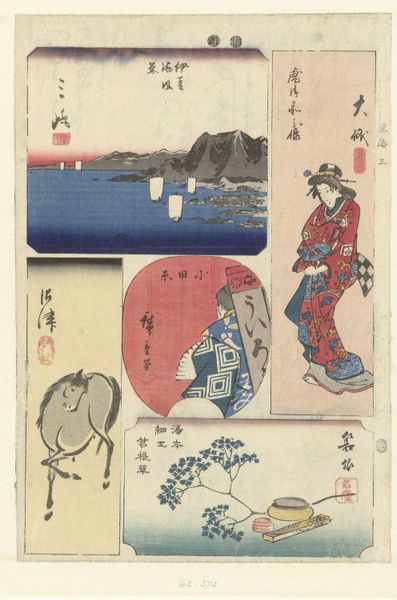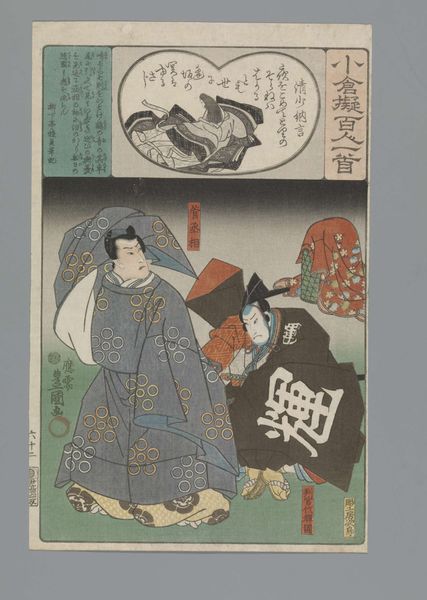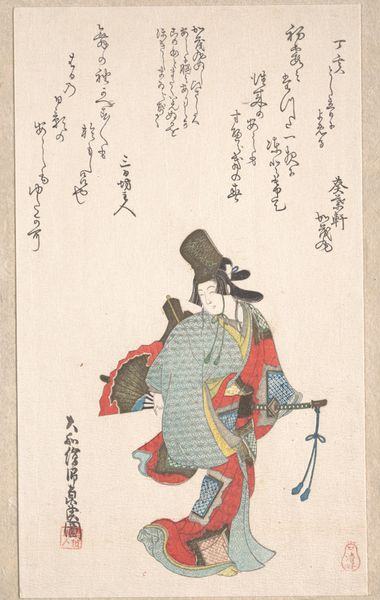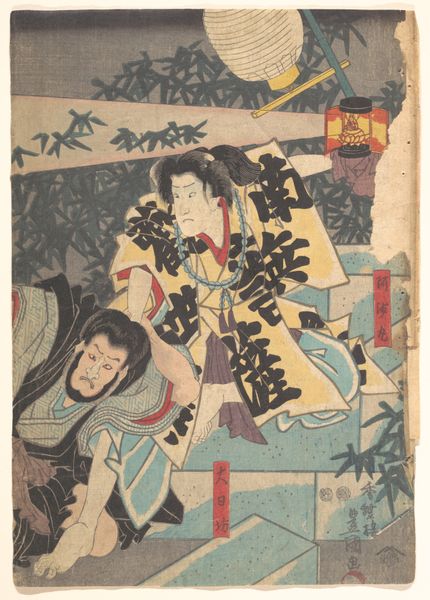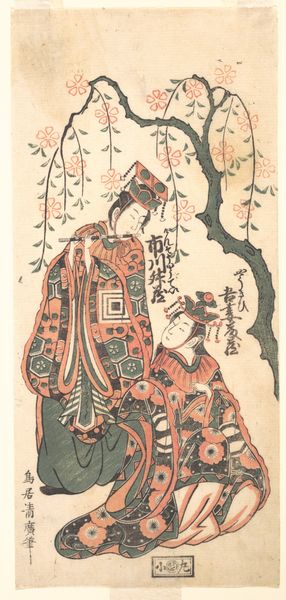
A Fraudulent Murasaki’s Rustic Genji by Ryūtei Tanehiko 1829 - 1842
0:00
0:00
print, woodblock-print
#
narrative-art
# print
#
book
#
asian-art
#
ukiyo-e
#
figuration
#
linocut print
#
woodblock-print
Dimensions: Each: 6 7/8 × 4 5/8 in. (17.5 × 11.8 cm)
Copyright: Public Domain
Curator: This artwork, dated between 1829 and 1842, is titled *A Fraudulent Murasaki’s Rustic Genji* by Ryūtei Tanehiko and beautifully realized by Utagawa Kunisada. Editor: My first impression is a playful visual riddle. The open book format makes it so approachable, doesn’t it? But the juxtaposition of that single figure with the wallpaper-like page… it sets my mind off on a thousand little tangents. Curator: It's quintessential ukiyo-e. Kunisada, known for his figuration, captured that "floating world" vibe beautifully, even within the constraints of a woodblock print. The book is actually an adaptation of "The Tale of Genji." It seems that he captured figures not to create literal narratives, but evoke them through a mood of their costumes, facial expression, posture. Editor: Ukiyo-e... Floating world. Yes, there’s a feeling here like catching a snippet of gossip over tea. And the contrasting pages! I immediately focus on symbols—those repeating motifs resemble stylized seals or perhaps currency. There's a suggestion of contained wealth or power maybe? On the first page, the man appears to be resting in his leisure, or idly lost in thought about wealth. He has an interior quality. Curator: Precisely. These visual elements create tension, don't they? I always feel it. It is the tension in art making of working in reproduction and serial process that seeks spontaneity and novelty! Each time, different but same. He did that! Editor: It is that tension between narrative and ornamentation that keeps drawing me back. I imagine the artisan so carefully carving each woodblock, aware that his art exists within a much larger cultural fabric. What is so impressive to me is how a narrative can be conveyed with such stylistic choices, for example, the man’s colorful layered robes. And on the opposite page, the text itself seems to become pattern. What did book design signify in its time? What makes art more of something because of context like this? Curator: A world of possibility, don't you think? Each print a doorway into not only visual beauty, but also cultural memory. He made that real for us in this one little artwork, and made a comment about the printing press, too! Editor: Indeed, Kunisada allows us to see how symbols carry so much emotional and cultural weight over the ages. I was moved in ways I was unprepared for.
Comments
No comments
Be the first to comment and join the conversation on the ultimate creative platform.
